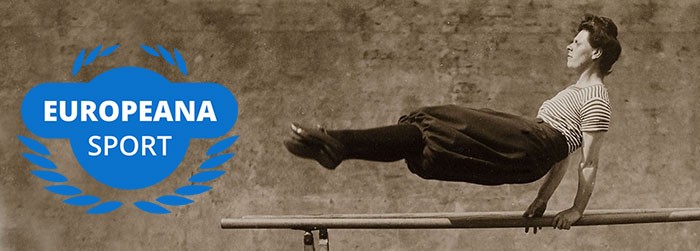Sport competitions in the 1920s and 1930s
The sporting championships we enjoy now have long, historical roots. The modern Olympic Games were inspired by the Olympics of ancient Greece, reviving and valorising competitions from a time before the industrial and modern world.
In Ireland, the Tailteann Games can be seen to follow a similar path, reviving an ancient sporting tradition in modern times.
The Tailteann Games were a sport championships for Irish people or those with Irish ancestry. They were held across Ireland in 1924, 1928 and 1932. In these years, Ireland had just won its independence. The Tailteann Games were seen as a way to establish the new Irish state, reviving an ancient sporting custom.
In Bronze Age Ireland, large sporting gatherings known as funeral games were held. These were athletic competitions held to honour a recently deceased person.
The name Tailteann derives from one such event: the Aonach Tailteann (the Tailtin Fair) held in the townload of Teltown in County Meath.
According to the Annals of the Kingdom of Ireland, the fair was established by the legendary king Lugh Lámhfhada (reigned 1849 to 1809 BC) in honour of his foster-mother, Tailtiu.
Sport was an important aspect of Irish nationalism in the early 20th century.
In the late 19th century, the Gaelic Athletic Association (GAA) was founded, promoting Irish sports such as hurling and Gaelic football as well as opposing 'English' sports such as soccer, rugby and cricket.
Launched to celebrate the independence of Ireland, the Games were first announced in 1921. Due to the Irish Civil War in 1922, the Games were postponed until August of 1924, a year after the war had finished.
In 1924 and 1928, the Tailteann Games were held shortly after the Summer Olympics, allowing athletes that had participated in Paris (1924) and Amsterdam (1928) to compete. Additionally, some Olympic athletes who were not of Irish ancestry were invited to compete to increase the competition and attract audiences.
The Games were held in various venues across Ireland, centred in Dublin at the GAA stadium Croke Park.
Events were held in athletics swimming and other aquatic sports, rowing, boxing, rounders, yachting, golf, tennis, gymnastics, wrestling, weight-lifting, billiards, chess, Gaelic football, hurling, handball and camogie (hurling for women).
There were events beyond sport too, with Irish dancing, music, painting, crafts, writing and storytelling competitions.
The 1932 Tailteann Games were less successful. The Olympic Games that year were held in Los Angeles, with the Dublin event not benefitting from an Olympics in a nearby country as previously. The Games duration was shortened from a fortnight down to a week.
Political changes in Ireland in the 1930s meant there was less will to continue with the Tailteann Games. In 1937, a committee was formed to explore the possibility of holding further games, but with the beginning of World War II, the games never took place again.
Thus, the Tailteann Games became a part of history, as much as the ancient Games which inspired them.
However, the name lives on in an annual cycling race held in Ireland since 1953, the Rás Tailteann.
Partagez votre histoire sportive
Vous voulez nous aider à raconter l'histoire du sport en Europe au passé et au présent ?
Nous vous invitons à nous raconter vos expériences sportives à travers des objets comme des photographies, des souvenirs, des équipements ou des prix.
Partagez votre histoire →
Ce blog fait partie du projet Europeana Sport qui met en valeur les trésors culturels liés au patrimoine sportif en Europe.

